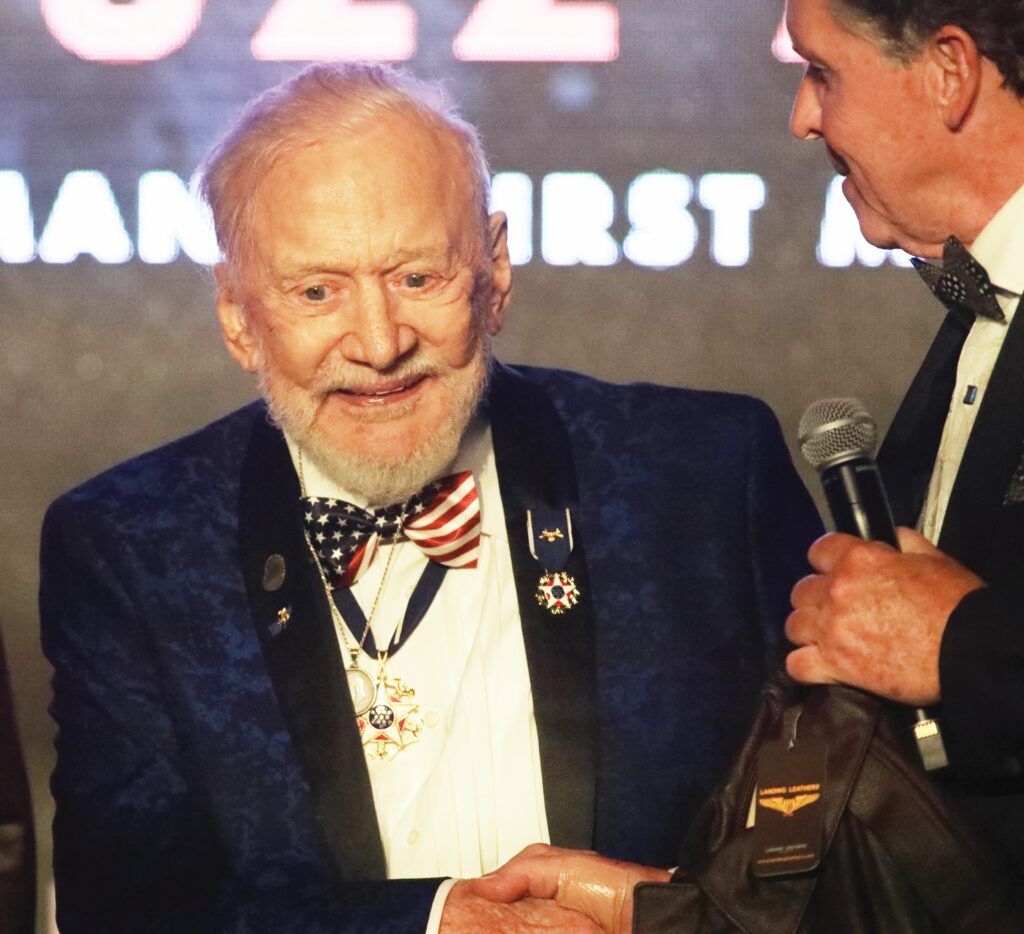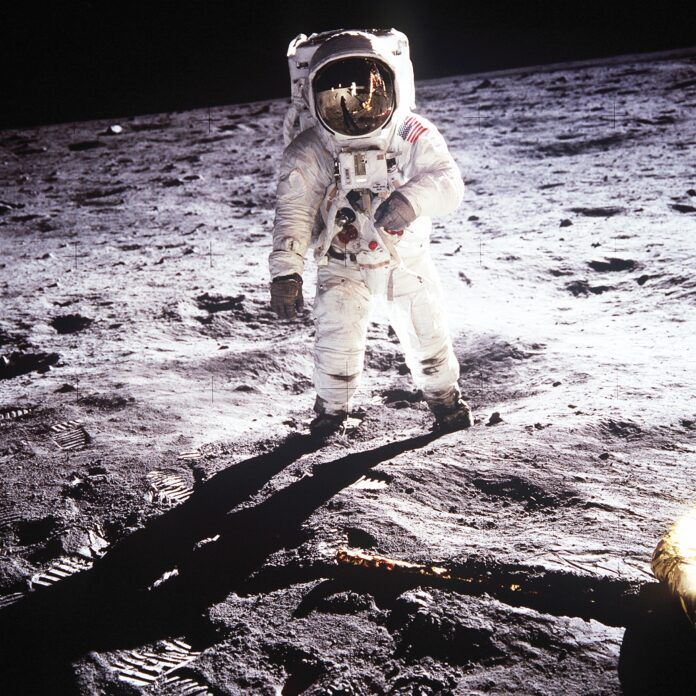July 20, 1969 will not be a date forever remembered in infamy. By contrast, it will be remembered
as the greatest technologic achievement in the history of humankind.
That’s the date when NASA put the first two men on the surface of the Moon, our nearest celestial neighbor.
Commander Neil A. Armstrong and Lunar Module pilot Edwin “Buzz” E. Aldrin Jr. received the honor of placing the first human footprints on the powdery gray lunar soil. Armstrong’s iconic photo of Aldrin saluting the American flag at the Tranquility Base landing site supremely demonstrated America’s technological superiority to boldly claim victory in the Cold War Space Race.
I was 10 years old at the time and still remember the events vividly.
CBS news anchor Walter Cronkite was a staunch supporter of the U.S. space program and our family had our television set tuned to the network for coverage. No Little Green Men were seen on display but Armstrong’s shadowy image coming down the ladder was surreal. The high contrast black-and-white TV image was upside down at first before mission controllers were able to flip it for the bedazzlement of the estimated 600 million viewers worldwide.
Armstrong seemed to float to the surface in the one-sixth gravity of the Moon. After testing the lunar regolith with his boot, he uttered words that defined the 20th century.
“That’s one small step for (a) man, one giant leap for mankind.”
Static interrupted part of the message but it’s meaning was clear.
It was revealed much later that an alternate announcement had been prepared for then U.S. President Richard Nixon to read over the airwaves had the Eagle crashed on the lunar surface with no way to retrieve the dead or marooned astronauts.
It was almost needed.
The Eagle overshot its intended landing site by four miles and was headed straight for a large boulder-strewn crater before Armstrong took over manual control and safely set the lunar lander down with less than a minute of fuel left.
It was just among the many heroic acts performed by the crew on the history-making mission.
After the landing, the astronauts departed the LM six hours later for a two hour, 15-minute moon walk. The men jumped around like kangaroos in the low gravity environment. It was mesmerizing viewing.
The duo spent 21 hours, 36 minutes on the lunar surface before lifting off to dock with the Columbia lunar orbiter manned by Michael Collins, the third man on the mission. The trio splashed down in the Pacific Ocean on July 24 after eight days in space.
The mission’s treasure trove included 47.5 pounds of moon rocks for scientific analysis on Earth.
Armstrong died in 2012 at age 82, his lips firmly sealed on what he may have seen on the lunar surface. Alien conspiracy theorists never found their pot of gold.

20 Apollo 11 celebration event in Balboa Park.
Appropriately, the Moon was full last weekend (Full Buck Moon) to denote the 55th anniversary of the Apollo 11 landing. The public had a chance to make a connection to the history making event with the “Fly Me to the Moon” celebration hosted by the International Air & Space Hall of Fame and the San Diego Air & Space Museum in Balboa Park. Aldrin, the lone astronaut remaining from the Apollo 11 crew, was in attendance.
Collins died in 2021 at age 90. Aldrin, 94, spoke a few words to highlight the program.
In the shoes of giants.














